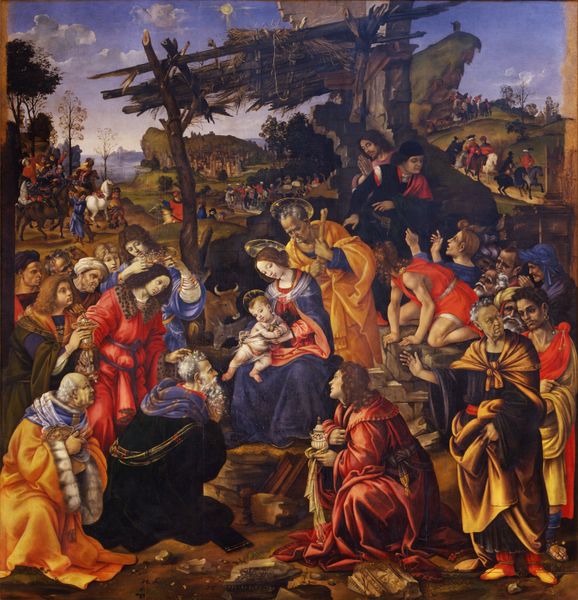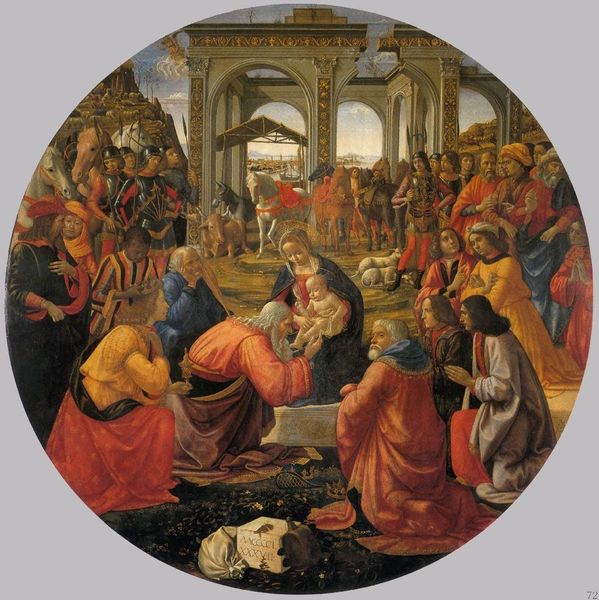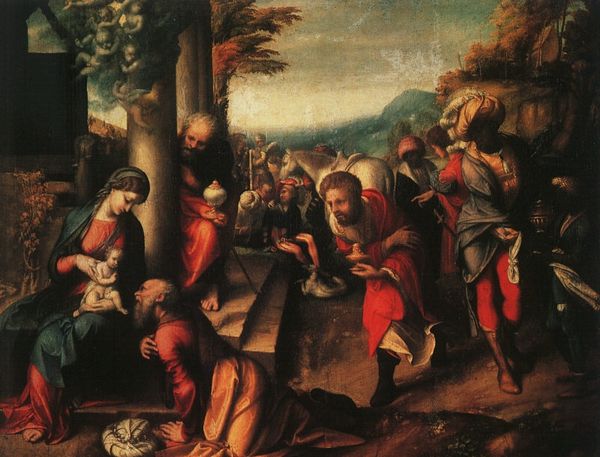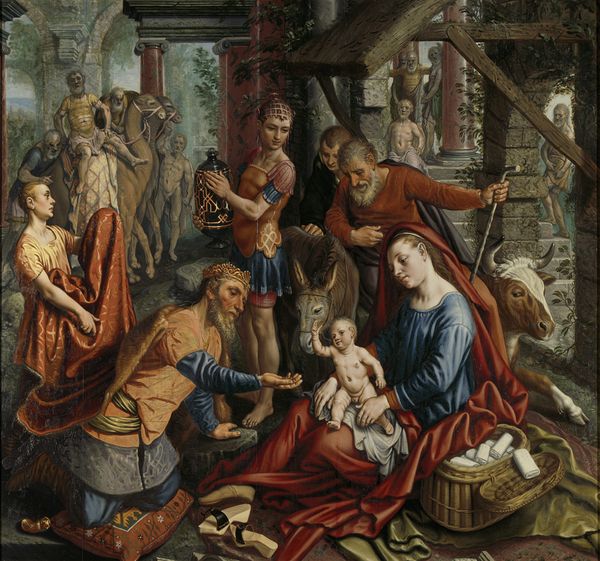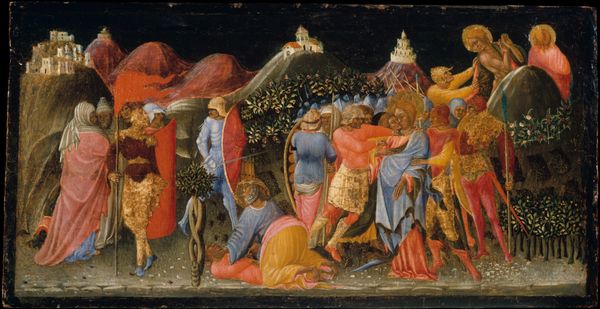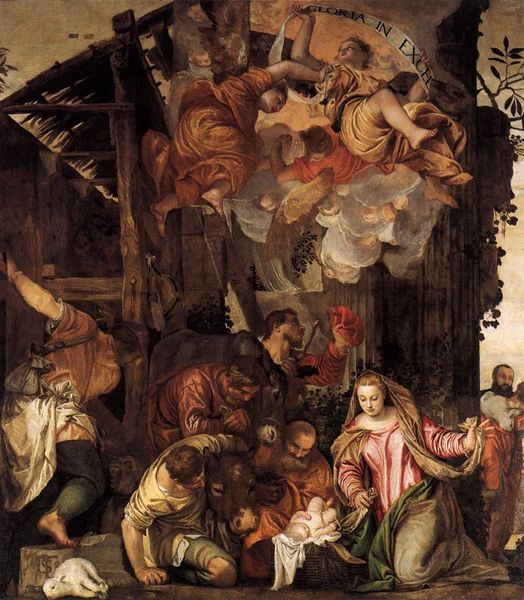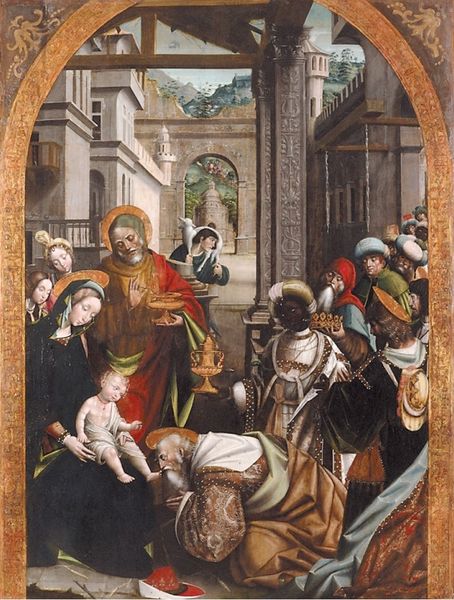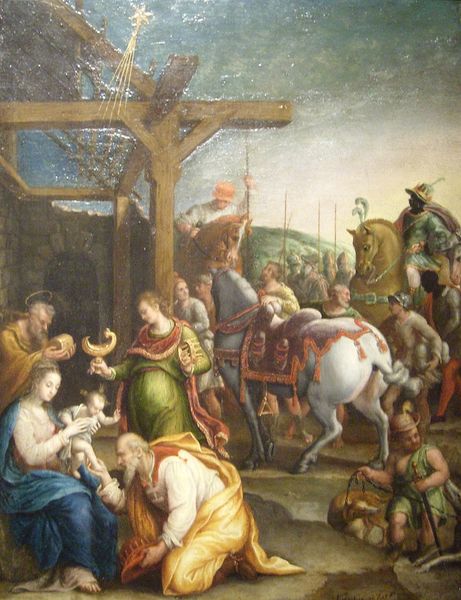
painting, oil-paint
#
high-renaissance
#
painting
#
oil-paint
#
figuration
#
oil painting
#
group-portraits
#
history-painting
#
italian-renaissance
Copyright: Public Domain: Artvee
Curator: Botticelli’s “Adoration of the Magi,” dating circa 1476, immediately strikes me with its peculiar staging. It feels less like a sacred event and more like a theatrical spectacle. Editor: Indeed, there's a rawness in the very materiality that clashes with its divine subject matter. Look at the cracking of the paint in areas. How does its earthly construction inform your view of its presentation? Curator: The ruin setting itself speaks volumes—classical arches on the left in decay juxtaposed with a roughly constructed stable behind the Virgin and Child. It represents the transition from the classical world to the Christian era, visually articulating a break in philosophical structures. Editor: Right, and that ruin almost becomes a construction site. We have this holy scene enacted amidst rubble and exposed material. One almost imagines Botticelli hauling oil paints and scaffolding, the labor of representing a miracle is revealed. Does this inform how we see other renaissance master workshops, do you think? Curator: Certainly, understanding Botticelli's method invites us to interpret these figures in a less idealized way, highlighting the role of his hand. And regarding those figures: consider their placement. Rather than creating an ethereal distance, Botticelli interweaves known Florentine figures within the holy narrative. The symbolism embedded in their expressions and positions subtly reinforces the ruling Medici family’s power. Editor: You make an excellent point. Furthermore, what do we make of the implied audience, both within and without the image? I mean the artist's studio as a zone for social and political negotiation. These pigments, sourced, ground and mixed, signify patronage, value, wealth… They ground our interpretation beyond symbolism. Curator: The materials themselves take on symbolic weight! Now that's a fascinating thought that really pushes beyond simply a visual interpretation of the artwork. Editor: Precisely. Viewing art through a material lens lets us appreciate the layers of significance woven into its physical presence and conditions of production, making the history a little less divine and little more human. Curator: Agreed. Botticelli’s carefully considered structure gives way to a compelling discourse when viewed as the outcome of very deliberate material choices and physical labour.
Comments
No comments
Be the first to comment and join the conversation on the ultimate creative platform.
